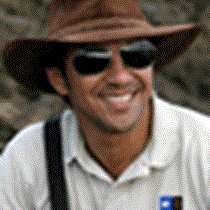Española Island
Today we have traveled to the remote far eastern side of the archipelago de Colon. This has been the official name of the Galápagos Islands since they were added officially to the Ecuadorian territory back in 1832; however, the famous giant tortoises gave much more fame to its alternative name, the Galápagos Islands.
Española is the official name of the oldest island in the archipelago, and it refers to the original discoverers of the islands, Spaniards.
Even though it is our last day, the amount of activities seemed to have increased and consequently the fun! The first part of the morning was dedicated to kayaking, snorkeling and beach time.
It was absolutely wonderful to experience our last snorkeling on a calm bay with sea lions and so many tropical fish. As for the kayakers, three rounds of kayaks during the morning gave us the chance to explore the coastline of Gardner Bay under the company of very curious sea lions and turtles popping up along the way.
I have to admit that my favorite part was the white, long beach known as Gardner, where quite a few dozen sea lions were found simply basking under the sun; our guests seemed to be delighted by the fact that none of them changed their behavior due to our presence on the island. They merely acknowledged our company as we walked in between their colonies, trying to keep a discrete distance and also trying not to interfere with their lives.
An unexpected shower hit us while we were just finishing our visit, and even under those conditions some of our guests did not want to leave this paradise. The rain poured harder on us and that seemed to do the trick, but we were so happy to have evidence that the four long years of drought in the Galápagos are over! Leaving such a beautiful beach did have its rewards, since we headed towards another highlight located not too far away from Gardner.
Punta Suarez was our visitor site during the afternoon, providing us with new species for our Galápagos wildlife list of sightings. Marine iguanas endemic to Española were found by the hundreds, while the cliffs of the island revealed large colonies of blue-footed and Nazca boobies, as well.
The end of our visit on Española marked the end of our trip in the Galápagos, but the amount of memories taken from all the adventures during this expedition will keep the Galápagos alive in our minds for a long time.




